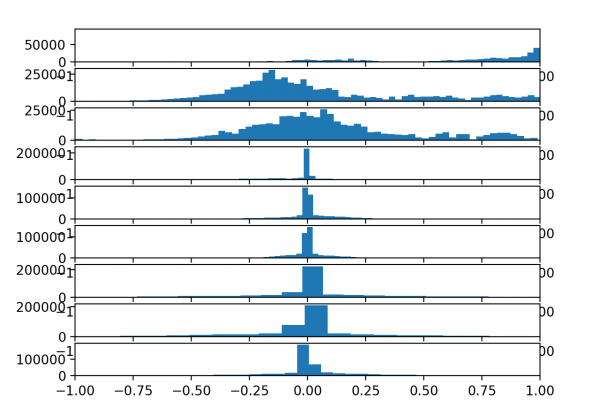1D Convolutional Neural Network Models for Human Activity Recognition

Last Updated on August 28, 2020
Human activity recognition is the problem of classifying sequences of accelerometer data recorded by specialized harnesses or smart phones into known well-defined movements.
Classical approaches to the problem involve hand crafting features from the time series data based on fixed-sized windows and training machine learning models, such as ensembles of decision trees. The difficulty is that this feature engineering requires deep expertise in the field.
Recently, deep learning methods such as recurrent neural networks and one-dimensional convolutional neural networks, or CNNs, have been shown to provide state-of-the-art results on challenging activity recognition tasks with little or no data feature engineering, instead using feature learning on raw data.
In this tutorial, you will discover how to develop one-dimensional convolutional neural networks for time series classification on the problem of human activity recognition.
After completing this tutorial, you will know:
- How to load and prepare the data for a standard human activity recognition dataset and develop a single 1D CNN model that achieves excellent performance on the raw data.
- How to further tune the performance of the model, including data transformation, filter maps, and kernel sizes.
- How to develop a sophisticated multi-headed one-dimensional
To finish reading, please visit source site